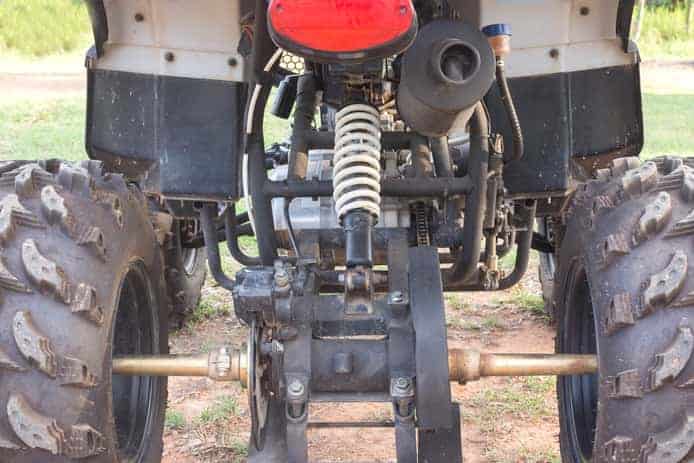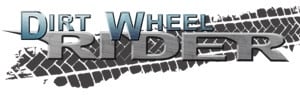Table of Contents
Routine maintenance is the key to making sure your ATV stays in the best shape it can be and performs well for years to come. Changing the oil is one of the most important and most often performed routine maintenance actions. Most people dread oil changes on things like their car but this is very simple on an ATV.
Check out this simple set of steps to make sure you have no problems changing the oil on your 4 stroke atv.
Neglecting to maintain your ATV can often cause major problems in the long run. There are many moving parts and these are high performance engines. They need fresh oil very regularly to keep them in top shape. I cannot stress enough how important it is to set up a routine maintenance schedule and put it into your calendar. You will save tons of money and prevent headaches in the long run.
Gather Supplies
Let’s start with the supplies you will need first. Make sure you have these items with you because they will speed up this process along the way.
- Oil Pan
- Oil (Yamalube is great ATV oil!)
- Oil Filter
- Allen Wrench
- Ratchet / Sockets(s) for Drain Plug
- Torque Wrench
- Rubber Gloves
- Rags or Paper Towels
- Funnel
- Crush Washer (if your model calls for one)
Note: Frequency of oil changes should be done according to the owner’s manual that came with your atv but it is common to change the oil once per month or every 50 hours for most atvs.
Warm Up the Engine
First, start your engine and let it idle for just a few minutes so that the oil inside can warm up enough. This is a practice you should always follow when you start up your atv for riding as well. Don’t just start up and take off like a bandit!
Warming up the engine is essential because cold oil is much harder to drain than warm oil. Warm oil flows through the inside of the engine case much better when it is warm, it will also allow it to drain much easier and ensure you get the majority of the old oil out.
Remove the Oil Drain Bolt
Here is where the rubber gloves come in handy because this is where things get messy. Once the drain plug(s) are located slide the oil pan under them and use the proper size socket and ratchet setup to loosen and remove them. Make sure you don’t drop the oil drain plugs into the oil pan or you will have to dig them out. Here is one tip i do to keep the drain plug from falling. Use a deep well socket to completely unscrew the plug. Try to keep the plug seated in the socket and use it as a cup to hold the plug in place so it does not drop.
Lay out a few paper towels or a rag and place the oil filler cap, oil filter, and drain plugs there to keep any grit or dirt from getting on the parts.
Sport atvs have a much more “open” design and don’t have many fairings and parts in the way. Utility atvs on the other hand may require you to remove fairings and even the seat. If you don’t already know where the oil drain plug is located just take a quick look in your owner’s manual and there should be a schematic breakdown or a helpful picture to help you locate it.

There are many different types and brands of atvs out there and that is the best resource for locating your drain plug. For example, my Polaris Outlaw 525S has it’s drain plug on the bottom of the crankcase and is easily accessible. A Raptor 700 typically has 3 drain plugs: one on the oil tank one on the crankcase, and the final is the bottom bolt on the oil filter housing. Typically the drain plug is located on the bottom of your utility atvs but every model can be different so that is why I suggest you read your owner’s manual. Locate the oil filler cap and unscrew it to remove it.
Remove the Old Oil Filter
Now that you have the drain plug(s) out and the oil has stopped pouring out, use an allen wrench to take off the oil filter cover. Normally this is only three screws. (Some ATV’s have a screw on filter. These simple screw on and off without having to remove a cover to access the oil filter housing.) Once the cover is removed go ahead and pull out the oil filter.
Make a mental note of the orientation of the filter when you remove it. The new or cleaned filter will need to go back in the same way.
If you have a stainless steel reusable oil filter, you will just need to clean it. You can use any kind of mineral spirits to clean it out and then blow it out with compressed air. You can use soap and water to clean them out as well. Then you can just spray them off with water to get all the soap out. Use carb spray to get all the water out after it is rinsed out thoroughly. With a disposable filter and oil please make sure you are responsible and find out a location near you where you can recycle them.
Make sure you wipe any gunk that has collected on the oil filter cover and inside the oil filter housing.
Install New Oil Filter
Take you finger or a rag and dip it into the old oil. Rub this oil onto the new or reusable filters O-ring or rubber seal. Install the new or cleaned oil filter into the housing in the direction the previous filter was installed. Now install the oil filter cover and screw in the screws until they are finger tight.
It is very important you use a torque wrench to tighten these bolts to the manufacturer’s specified rating!
You will strip the threads on your ATV’s aluminum parts if you get in the bad habit of not using a torque wrench. They are inexpensive enough to go buy and will save you time, money, and heartache while performing all the routine maintenance required over the years.
Re-Install Drain Plugs
Wipe off any dirt or grit paying special attention to the threads and the surface that goes inside the engine compartment. Inspect your drain plugs for any damage or wear that may cause the drain plug to spring a leak.
I pulled the drain plug on my buddy’s ATV while helping him service it and noticed the drain plug had a hairline crack in it that looked like it came from a bad landing. If we reinstalled that and rolled the dice it could have completely broken and leaked oil out during one of his rides causing a lot of damage.
Add New Oil
Now that all your drain plugs are installed (double check them) grab a funnel and put it into the oil filler hole that you removed the cap from earlier. Slowly pour the recommended amount of oil per your owners manual into the engine (typically 1 and a half to 2 and a half quarts. Do Not Overfill.
High quality oil is first and foremost when choosing your oil. This will cost more upfront but will save money in the future. Many things can happen when choosing poor quality oil to put into your ATV.
- Bearing failure
- Cylinder Wall Scuffing
- Low Fuel Mileage
- Overheating
- Piston Rings Seizing
- Cam Wear
- Poor Throttle response
Now that you have your oil filled to the proper level, install the filler cap. Start your engine and let it idle for a few minutes to circulate the oil throughout the engine compartment. Now turn off the engine. If your atv has a dipstick instead of a fill level indicator, unscrew it and wipe it clean. Now you can insert it back in, hold for 2 seconds and remove it again to check the oil level and add more oil if needed or just clean up your work area.
Time to Ride
Now that your atv has had the oil properly changed, it’s time to go sling some dirt. Remember, routine maintenance is the key to prolonging an ATV’s life and maintaining a well running machine.
